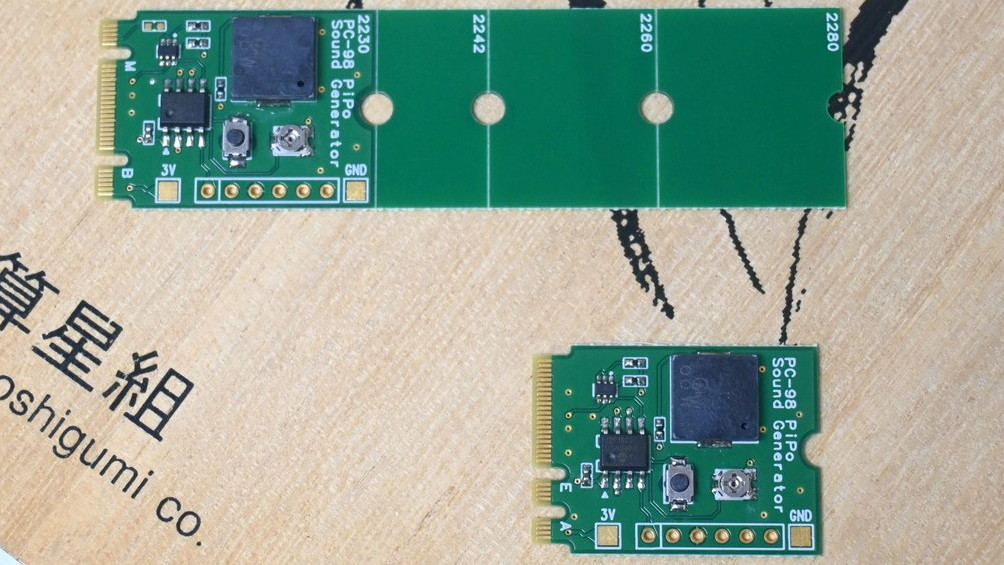
Fans of retro PC hardware, particularly the NEC PC-9800 series of Japanese personal computers released in the 80s, may be happy to know that the PC-9800 series' unique startup chime can now be added to most modern PCs and laptops through a specialized M.2 adapter, reports GDM.Co.JP. If you miss commonplace PC startup sounds in general and have a free M.2 SSD or M.2 Wi-Fi slot on your desktop or laptop motherboard, this little gizmo should also scratch that itch.
The initial release of the NEC PC-9800 series started with the noted PC-9801, a 16-bit machine with 640 KB of RAM, color graphics, and an x86 architecture that still enabled compatibility with ports of MS-DOS or Windows. This humble starting point for domestic PC production in Japan quickly took off among enterprise customers in particular—even leading to the PC-98LT in '86, a PC-9800 Series laptop.
These days, lots of ancient Japanese PC software released for the PC-9800 machines still gets played on original hardware (particularly in Japan) or emulated through today's considerably more powerful machines (particularly everywhere else). For an added touch of authenticity to those emulation setups or just folks who happen to miss distinct startup sounds and want one with an interesting story attached, the M.2 PC-98 Startup Sound Generator seems like an ideal choice.
But how does it work? The Startup Sound Generator comes in two distinct M.2 form factors: one ranging through the standard 2230/2242/2260/2280 lengths (visibly trimmable down to 2230) with a B/M key typically used by SSDs, and another that starts at the shortest 2230 length with an A/E key typically used by Wi-Fi modules.
Either version of the unit includes a small built-in speaker with adjustable volume. They are also closer to 3mm than the standard M.2 2mm, which may result in a too-tight squeeze in some SFF form factors and laptops. Both units are currently listed for sale at Kadenken.com (B/M and A/E) at 2880 yen before taxes, or roughly ~$19 USD before shipping costs. For the most part, this is a niche piece of hardware aimed at Japanese retro PC enthusiasts, but it's still nice to see any piece of tech restoring retro PC features that actually weren't that bad— who doesn't like a comfy startup sound, anyway?







